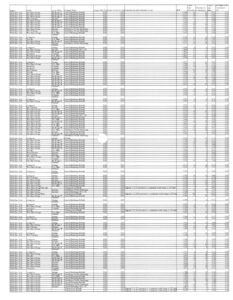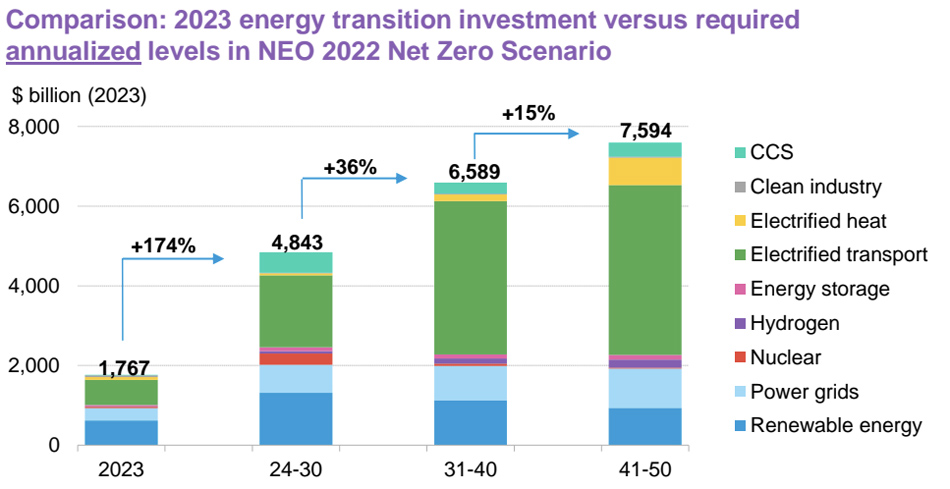The return to demand growth around the country has the industry considering how to meet it, with many utilities and states considering new natural gas-fired units, while others are trying to avoid growing carbon emissions while maintaining reliability.
The Department of Energy on April 17 released a report on “The Future of Resource Adequacy,” which says firms investing in natural gas resources should make them able to be retrofitted with carbon capture and storage, or with the ability to burn clean hydrogen. (See related story, DOE Urges Utilities to Embrace ‘Holistic’ Reliability Solutions.)
“Building new natural gas plants without a strategy to address emissions risks infrastructure lock-in and stranded assets,” the report said. “To help address these concerns, new gas capacity should be capable of achieving and supporting clean electricity systems. For example, gas generators should be designed to operate flexibly and at lower capacity factors to effectively support systems with increasing amounts of variable wind and solar generation.”
Still, many utilities are trying to build new natural gas plants, with the Georgia Public Service Commission on April 16 approving Georgia Power’s request to add three new dual-fueled combustion turbine units at an existing generation site between integrated resource plans because of unexpected load growth in its territory. The commission also authorized the utility to invest in new grid-scale batteries.
The new capacity was needed because Georgia Power found its 2030/31 winter demand projections had gone up by 5,900 MW since it issued its 2022 IRP, according to a brief the utility filed early this month with the PUC. The firm found it would need new capacity by winter 2025/26.
“Given the continued increase, progress and pace of committed customer load, the commission should have an extremely high degree of confidence in the forecast and should approve the company’s load forecast as filed and agreed to in the stipulation,” the utility said.
Overhanging the regulatory cases around new natural gas plants are EPA’s looming rules under Section 111(d) of the Clean Air Act, which are expected to restrict fossil fuel emissions in the future. Ultimately, the rule’s fate depends on the presidential election, as similar rules were overturned the last time Donald Trump was in the White House.
The Southeast in particular has been a hot spot for new demand from Georgia up to Data Center Alley in Northern Virginia, Luis Martinez, the Natural Resources Defense Council’s lead for climate and energy in the region, said in an interview.
Dominion Energy has proposed building a major new natural gas plant in Chesterfield, Va., just south of Richmond.
“The troubling trend is the rush to build gas to meet it, which is what we’re hoping won’t come to fruition … because it will derail our short-term and long-term, I’d say, climate emission-reduction goals,” Martinez said.
Moving to more and more natural gas in the region also makes it more prone to sudden price spikes because of the commodity’s volatile market, he added. North Carolina’s Duke Energy has expanded its gas fleet in recent years, and customers have been pinched by spiking prices from recent winter storms and generally higher costs in 2022, which now are being felt on their power bills, Martinez said.
One reason the Southeast is seeing a flood of new natural gas plant proposals is that it relies on traditional regulation, meaning that as long as regulators approve the plant, it will get built.
“This risk of potentially having this new gas generation become a stranded asset, or not cost competitive, which you could see in other regions, is not present,” Martinez said. “Once they’re approved in the Southeast, then it’ll be on ratepayers to pay for that whole thing, even if in 10 years these things are no longer useful because they have to add carbon capture and storage or they have to transition them to hydrogen, as the EPA 111 rule would require.”
NRDC wants regulators around the region to evaluate all of the options they have to address the demand and pick the least-regrets ones, such as energy efficiency, before natural gas, he added.
California has long used the “loading order,” where its Public Utilities Commission prioritizes efficiency and clean energy and places expanding natural gas capacity as a last resort to maintain reliability. While the different politics of the region mean that will never be a formal policy, it could serve as rule of thumb, Jackson Morris, NRDC’s director of state power sector policy, said in an interview.
“There [is] tons of untapped energy efficiency on the system that needs to get tripled or quadrupled in scale. That’s No. 1,” Morris said. “Then you go to both utility-scale and distributed renewables projects. You also invest heavily in transmission and distribution investments, including both on existing reconducting efforts and things like that, as well as new lines and distribution infrastructure to maximize the capacity to move power around.”
Natural gas should be the last resort to solve resource adequacy issues, he said. And NRDC would prefer utilities build CTs at this time because even though on a unit basis they are less efficient than combined cycle, they run much less often.
Other states around the country are dealing with similar issues. Harvard Law School’s Electricity Law Initiative hosted a webinar this month with state regulators to discuss how to meet higher demand while staying on course for cutting emissions.
“I think the most important thing that we can do as states is to help to get the incentives right to balance the reliability and sustainability and clean energy goals that we’ve got,” Illinois Commerce Commission Chair Doug Scott said.
A big part of Illinois’ strategy is keeping its nuclear plants open. It pays them when natural gas is cheap, but customers actually received rebates in 2022 when the commodity’s price spiked, Scott noted. As far as new capacity, Illinois is working to expand renewables.
Minnesota Public Utilities Commission Vice Chair Joseph Sullivan noted the industry has dealt with even higher rates of demand growth in the past, such as when consumers adopted air conditioning en masse and demand grew from 7 to 9% every year.
“If you put on a data center, that’s 10% of the entire system; it’s a lot, and we’ve got to deal with that,” Sullivan said. “But if we plan for it, and we use the processes that we have, I think we’re going to get through it.”



